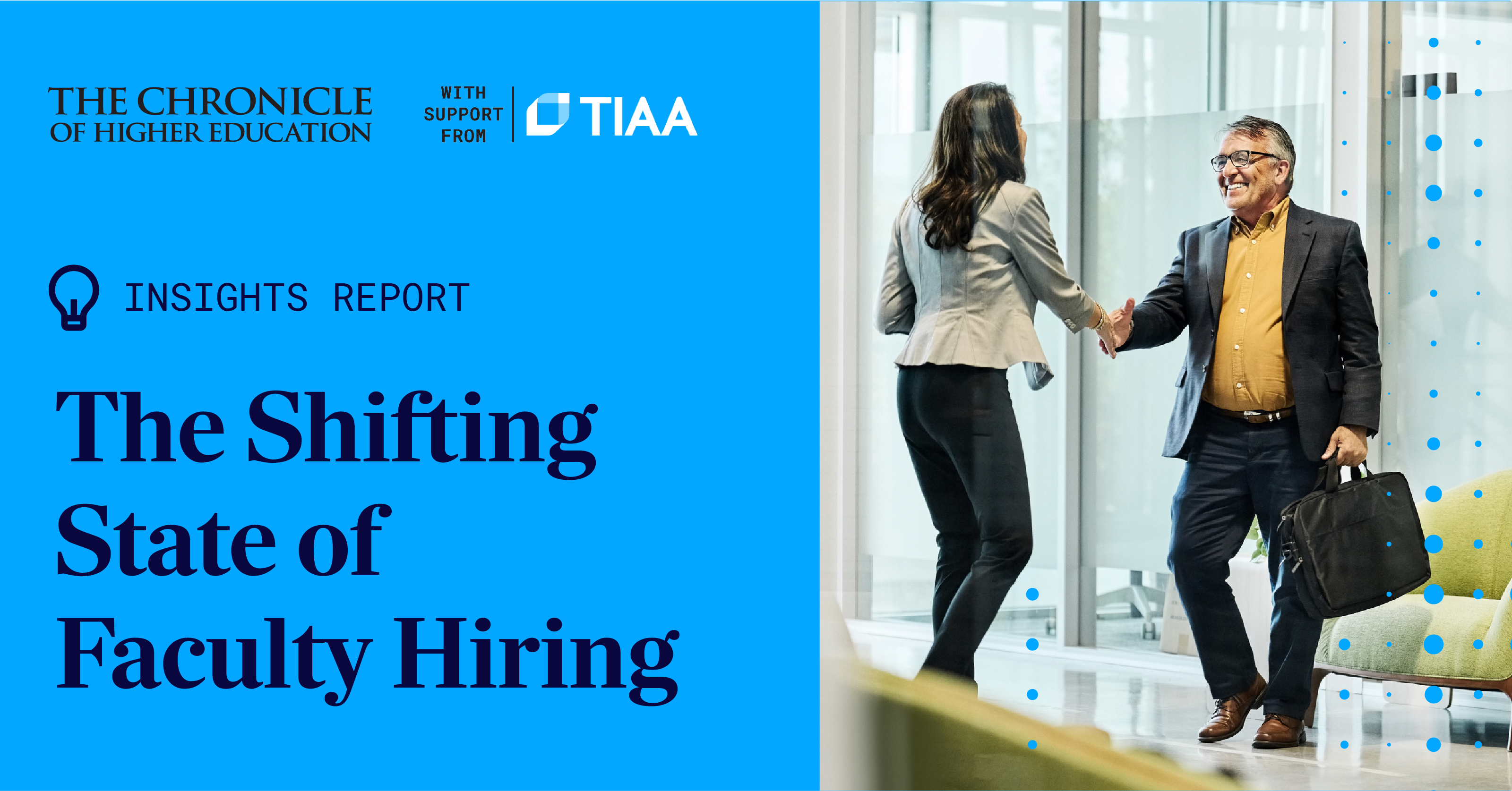


“Our ‘a-ha’ moment was when we noticed, post-Covid, that students sitting at home had more tech capability than people sitting in classrooms.” — Kevin Reeve, Utah State University’s executive director of teaching and learning technology
What does the modern classroom look like, and how will it continue to evolve? Dive into the latest Trends Snapshot, “The Evolving College Classroom,” to discover how institutions are reimagining their physical spaces to be more accessible, tech-friendly, and more.
After a downturn in faculty hiring during the pandemic, the last three years have seen an overall uptick in hiring, with tenured positions even making some gains. But the bigger picture, both for institutions and those seeking work, remains in flux – and politically fraught.
What are the trends in hiring, and how do they differ across different types of institutions and regions?
For professors and those seeking work, inflation and the pandemic caused the real value of faculty salaries, both tenured and non-tenured, to drop. Other money-saving trends, such as shifts toward contingent faculty, lead to less pay, fewer benefits, and reduced access to professional development for nontenured educators.
Other uncertainties arise around the current administration, such as the uncertainty of research funding. There’s also a growing divide among red and blue states affecting hiring, as potential talent may be more polarized in their predilection.
Read The Chronicle's new Insights Report, “The State of Faculty Hiring,” to uncover the current state of hiring in academia.
